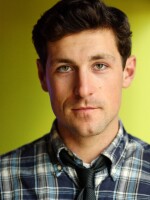http://stream.publicbroadcasting.net/production/mp3/wxxi/local-wxxi-962247.mp3
Universities produce tons of great ideas. The problem is that very few of them ever reach their full economic potential.
Events like last week’s Technology Showcase try to solve that problem - by helping university research find its way into the loving arms of corporate support.
The matchmaker in this case: a state-funded joint venture between the University of Rochester and RIT called the Center for Emerging & Innovative Sciences (CEIS).
“Mostly we’re just trying to facilitate one-on-one interactions,” says CEIS president Mark Bocko. “[We’re] trying to make new connections between university researchers and people in industry.”
At Wednesday’s event, researchers showed off their latest work, while companies highlighted a few of the high-tech nuts they’re still trying to crack.
One such researcher was Jannick Rolland, a professor of optical engineering at the U of R.
Her innovation is a probe that you can put on a patient’s skin, which uses light to spot cancer cells.
Basically, her prototype makes it so that doctors don’t have to carve off pieces of skin to identify potential problems.
“We call it optical biopsy,” says Rolland.
Rolland says a couple of European companies have expressed interest in her probe, but she’s still trying to find someone more local that could help her commercialize it.
“Maybe today it will happen,” said Rolland. “We’ll see. This is why we’re here at this meeting.”
Tech transfer
Transferring technology from the lab bench to the marketplace is becoming an increasingly important part of the Rochester economy.
University officials say the U of R alone gets about $400 million in federal research funding every year.
Organizations like CEIS - which is one of New York’s 15 state-funded Centers for Advanced Technology - want that money to translate into economic growth outside of the ivory tower.
Spinoff success story
One such idea that’s successfully cashed in on some of that investment is iCardiac.
Alex Zapesochny is the company’s president and co-founder. He can explain what his drug testing company does better than we can:
“What we do is look more deeply into an electrocardiogram, to help drug companies figure out if the drugs they’re developing will have any lethal cardiac side effects or not,” says Zapesochny.
Basically, Zapesochny says, they make sure new pharmaceuticals don’t kill anybody.
The company is based on research that was spun out of the University of Rochester Medical Center in 2006. When people talk about university ideas making the jump to the big leagues, iCardiac is one of the fast-growing companies they often point to.
It’s also a CEIS success story - receiving a grant from the organization in the company’s early days that helped iCardiac land a lot of venture capital.
Zapesochny says organizations like CEIS are a huge help for companies like his, especially in places like Rochester.
“[Rochester] has a ton of great technology,” says Zapesochny. “The key is always figuring out a way to actually pair that great technology with somebody that’s either involved in an early entrepreneurial venture or that’s actually part of industry.”
He adds: “It’s extraordinarily important not just to create the better mousetrap, as they say, but to actually find somebody who believes in it, takes it to the next level, distributes it, et cetera.”
It’s a formula that policymakers hope organizations like CEIS can help replicate.






